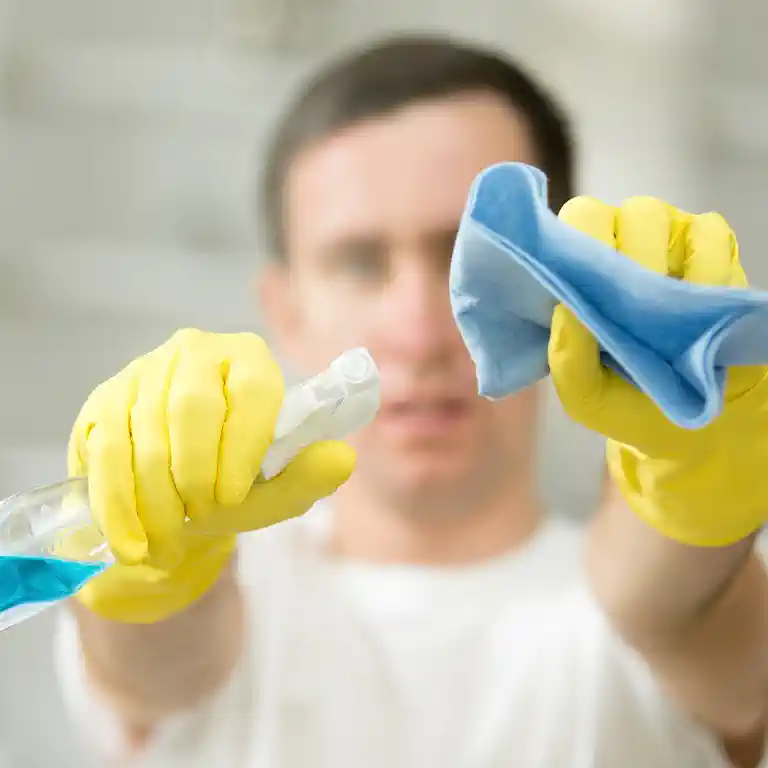Effortless Cleaning: Stainless Steel Appliances Without Streaks

My house has at least four or five cooking appliances. Our first experience with those stainless steel tools was unsettling because we didn’t know how to maintain them properly.
Metals made of stainless steel make great modern cooking tools because they look sleek and professional and can be used in many settings. Still, as soon as we touch its exterior, it lets all the smudges, fingerprints, and spots settle on it. Many households struggle with this problem because they care a lot about how their kitchen looks. Keeping our appliances shiny and free of streaks is a challenging learning curve that we have to go through while concerned about the harmful effects of complex chemicals.
In this article, I’ll be happy to share with you how to clean stainless steel surfaces without leaving spots, using methods that are both effective and good for the environment. With more than a decade of experience using stainless steel appliances, I think I know how to clean this valuable material at home. This guide will help you understand how to clean stainless steel appliances without streaks, everything from your fridge to your sink and cooking tools.
Table of Contents
Understanding Stainless Steel Composition
Before I give you the most beneficial cleaning tips and tricks, you need to know what makes stainless steel unique and how to handle it correctly. The fact that stainless steel doesn’t rust, tarnish, or corrode is because it is a composite made up of iron and chromium. There is nothing else in the kitchen that looks better or lasts longer than this. This is why billions of people pick stainless steel over many other excellent options.
Common Cleaning Misconceptions
Stainless steel doesn’t need much care, but it can get dirty. Mistakes people make when cleaning can actually cause damage and streaks over time. One of the most frequent errors homeowners make is using rough cleaners or tools, which can scratch the surface and make it easier for stains to show up. Even water has a lot of minerals in it, it can leave marks that look like lines. Because of this, it is very important to use the right amount of sanitizing water when you clean.
Cleaning Methods
Now, I’ll get to the critical part: how to clean stainless steel machines without leaving streaks. I will give you a few different ways to clean, each with its unique mix of effectiveness and long-term usefulness.

Vinegar Solution
One of my favorite natural and practical cleaners is a vinegar solution I make myself. Fill a bottle for spraying with a mixture of white vinegar as well as water. Apply it with a spray bottle, and wipe it up with a soft microfiber cloth, and make sure to sweep in the direction of the grain. Vinegar also aids in the breakdown of dirt and grime without disposing of any substances that might cause streaks.
Baking Soda Paste
In the past, it was difficult for me to get rid of more stubborn spots, but I found that a simple paste made of baking soda worked great for me. You can put together a paste by mixing any of the baking soda from your kitchen with water. Then, use a moist towel to apply the paste to the affected area and brush it gently. It is important to remember to clean the surface thoroughly and dry it entirely to avoid water marks and streaks buildups.


Level It Up with Lemon Juice
The natural acidity of lemon juice is perfect for breaking down grime and mineral deposits. This actually does an excellent job. Take some baking soda paste from the earlier baking soda recipe and mix a good amount of lime juice with it. Put this lemon soda paste mixer on a microfiber cloth. Slowly and gently apply it on the exterior of your appliance. In a cross-grain motion, wipe it off with a clean cloth. You shouldn’t spray this substance directly over the equipment. It could leave a rough coat and clutter up the area instead of cleaning it up.
Use Glass Cleaner
It is easy to use glass cleaner to clean stainless steel surfaces without leaving streaks. This is particularly applicable to appliances with glass parts, like ranges and ovens. Indeed, glass cleaner can be used to clean stainless steel. Wipe the stainless steel in a circular motion after spraying it with some water. Fingerprints and smudges come off swiftly with the circle action. To avoid streaks, be careful not to spray too much or put excessive force on the paint.


Using Club Soda
I know it sounds wild, but I used club soda and was surprised by how well it worked. The fizzing action caused by club soda helps get rid of stainless-steel spots. You can remove smudges and bring back the shine by spraying it on and wiping it off with a lint-free cloth. It does all of this without using complex chemicals in your kitchen. Club soda doesn’t leave streaks; the carbonation found in it aids in breaking down dirt and grease.
Olive Oil - The Ultimate Aftermath
It is now time for dessert! When I’m done cleaning, I always utilize the incredible olive oil. Using just an adequate quantity of olive oil polish after cleaning the surface makes it shine. Use a soft towel with a light amount of oil on it to rub the stainless steel in a circle. This technique not only reduces lines but also hides minor scratches, bringing the surface back to its original, shiny state. Olive oil is a safe and environmentally friendly choice over commercial cleaners that may contain harmful substances, which is one reason I liked using olive oil to clean stainless steel machines. Another benefit is that the oil protects against future marks and water spots, so your machines will look pleasant for longer.

Tips for a Streak-Free Cleaning Process
This is what I think about when I clean flawlessly. Pay careful consideration to the little things you do when you clean stainless steel surfaces so they shine and don’t have any crude lines. This information will assist you in improving your cleaning skills.
Proper Cloth Selection
The best way to clean is with a microfiber cloth given that it traps dirt and water very effectively. Getting a streak-free gloss on stainless steel is always easier with a clean, dry microfiber cloth. For better cleaning of different parts of your machines, try to get the bigger one so you can spray your mixture more than once.
Keep Your Motion Right
To keep the stainless steel from getting streaks, you should always wipe in the direction of the grain. Moving in Circular motions can help move and get rid of dirt without leaving any marks.
Drying and Buffing
If you use a cleaning solution or make a homemade paste, any leftovers on the surface can leave streaks. Always use a clean, dry cloth to wipe the surface clean to avoid water spots and get a smooth, shiny finish. Please avoid using the same wet cloth that has chemicals or mixers on it again. Instead, use a new one.

Maintenance and Prevention
Setting up a regular maintenance schedule will not only keep your stainless-steel’s surfaces in great shape but also make them last longer. For regular upkeep and safety steps, here are a few factors you should keep in consideration.
Regular Cleaning Schedule
Consider how often you operate your appliances while creating a regular cleaning routine. Depending on how usually you need it, this might be done every week, every two weeks, or any mix of daily and monthly cleaning. To keep your appliances shine streak-free, you must stay consistent. Your stainless steel appliances will look their best with little effort if you make regular cleaning a routine.
Protective Coatings
Your machines might benefit from having an exterior protective coating. It’s easier to clean and keep the inner surface secure because these coats make a shield that stops lines and makes it easier to get rid of fingerprints.
DIY Solutions vs. Commercial Cleaners: Pros & Cons
Your machines might benefit from having an exterior protective coating. It’s easier to clean and keep the inner surface secure because these coats make a shield that stops lines and makes it easier to get rid of fingerprints.
DIY Solutions
- Pros: Safe for the environment, doesn’t utilize strong chemicals, and saves money.
- Cons: It might take more work, and it could be less effective on stubborn spots.
Commercial Cleaners
- Pros: Effective at getting rid of tough spots, often antibacterial, and made suitable for particular surfaces.
- Cons: Harsh chemicals can be dangerous, leave lines, and result in more expenses.
FAQ: Common Question and Answer
We answer all of the essential inquiries you have about stainless steel appliances cleaning and give you answers that are easy to understand so you can get the most out of them.
Wet a microfiber cloth and mix water and vinegar. Please remove any remaining water from the surface to dry it.
Avoid using rough cleaners on your equipment because they can scratch the surface.
It is best to stay away from cleaners based on all types of oil because they can leave behind a greasy film and lines. Although Olive oil can be used in just an adequate quantity for polish after cleaning; it makes the exterior shine.
Substances with ammonia or bleach bases should be avoided, given that they may harm your appliances’ finishes.
Instead of paper towels, use a microfiber cloth to clean stainless steel. Paper towels can leave behind lint, and they might not be effective as well.
Conclusion
I hope this gives you an excellent idea of how to clean your stainless-steel items from now on. Make sure you try all of the different ways to clean to find the one that works best for you.
Don’t forget that cleaning your appliances can be an easy and fun job that not only makes your kitchen look great but also makes the appliances last longer. You can get an excellent shine that has benefits for our environment and your inner peace by using eco-friendly products and cleaning your appliances regularly.








